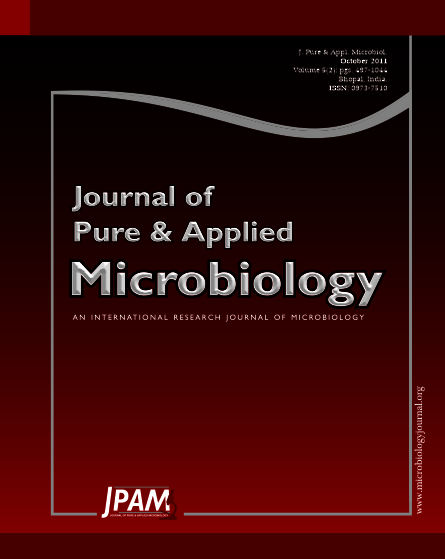An extensive and intensive survey of sewage, industrial effluents, rice fields, freshwater and earthworm casts for the presence of purple non-sulphur bacteria was undertaken from Warangal district of Andhra Pradesh state in India. In all the nine bacterial species, which included Rhodopseudomonas palustris, R.rutila, R.acidophila, Rhodopila globiformis, Rhodospirillum rubrum, Rsp.photometricum, Rhodobacter sphaeroides, Rb.capsulatus, Rhodobacter sp and Rhodocyclus gelatinosus were isolated. Among these Rhodobacter capsulatus, isolated from leather industry effluents could reduce maximum amount of chromium and was selected for further studies. Effect of alginate immobilization on reduction of chromium by Rhodobacter capsulatus was also investigated. Rb.capsulatus could reduce about 28 µM of chromium. Chromate reduction by free cells was less and was only 19 µM. Maximum reduction of chromium by free or immobilized cells of Rb. capsulatus took place on 12th day itself. Optimal activity of reductase was shown to take place at pH 7.6 and a temperature of 38°C. Enzyme activity was found to be in soluble fraction. Significance of the above results in light of existing literature is discussed in this communication.
Rhodobacter capsulatus, Chromate reduction, Anaerobic light, Chromate reductase
© The Author(s) 2011. Open Access. This article is distributed under the terms of the Creative Commons Attribution 4.0 International License which permits unrestricted use, sharing, distribution, and reproduction in any medium, provided you give appropriate credit to the original author(s) and the source, provide a link to the Creative Commons license, and indicate if changes were made.


